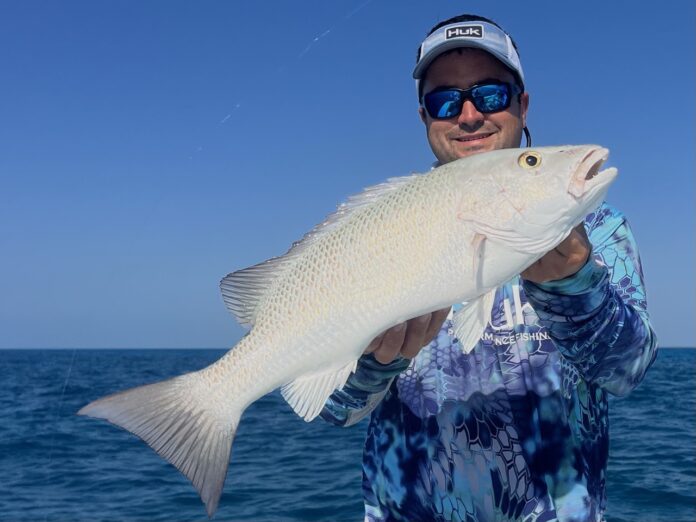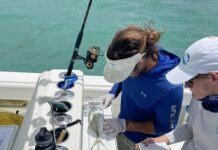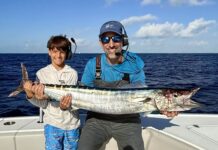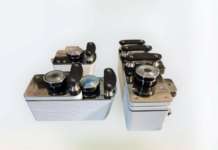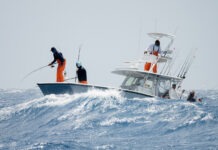Mangrove snapper, commonly known as gray snapper, is one of the few species targeted by fishermen here in the Florida Keys year-round, and the bite is about to turn on! Mangrove snapper spawn on local patch reefs in June through August in anywhere from 20 to 90 feet of water. This makes them one of the most sought-after species in the coming months. Not only are they a fun fighting fish, but they taste delicious too.
Mangrove snapper are found all over the Keys, but begin to congregate on reef patches this time of year. In the winter months, mangrove snapper can be found near bridges, in the bay on grass beds, on wrecks or in channels. Once spring comes and begins raising the water temperature, mangrove snapper begin to move out of Florida Bay and toward the reef on the Atlantic side.
I prefer to use lighter tackle when targeting most species, and mangrove snapper is no exception. My favorite setup is a seven-foot light action rod with a 4500 series spinning reel, spooled with 12-pound monofilament. As always, I use a Bimini twist on the main line to connect my fluorocarbon leader, typically six feet of of 20-pound fluorocarbon. Depending on the current and size of your bait, a weighted jig head of ¼ to ⅜ ounce should get the job done. The goal is to get your bait in the lower portion of the water column where the snapper spend most of their time, but not to continuously snag the bottom. Some anglers prefer to use a knocker rig with a ½-ounce egg sinker and 3/0 to 5/0 circle hook.
Don’t stress about the bait. For many species of fish, live bait is a necessity. However, when targeting mangrove snapper, using cut bait is fine. Although a live pilchard, pinfish or ballyhoo is a prime choice of bait, several other types will suffice. Cut ballyhoo, live or dead shrimp, scented imitation bait or artificial lures can also attract mangrove snapper. Soft plastic lures such as DOA or NLBN paddle tails on a lightly weighted jig head offer a thrilling strike when attacked by a snapper.
When you anchor up at your favorite spot to target mangrove snapper, start out by deploying a chum hoop with a block of chum to put a scent in the water. Remember, we are just putting some scent in the water to get the attention of the fish, not actually shaking the chum bag rigorously as we would do if we were yellowtail snapper fishing. Fish your spot for at least 30 minutes before giving up and moving on, as it may take some time to get bites if the current is slow. When showing up to a popular reef site, remember to be courteous of the anglers and chum slicks that are already there.
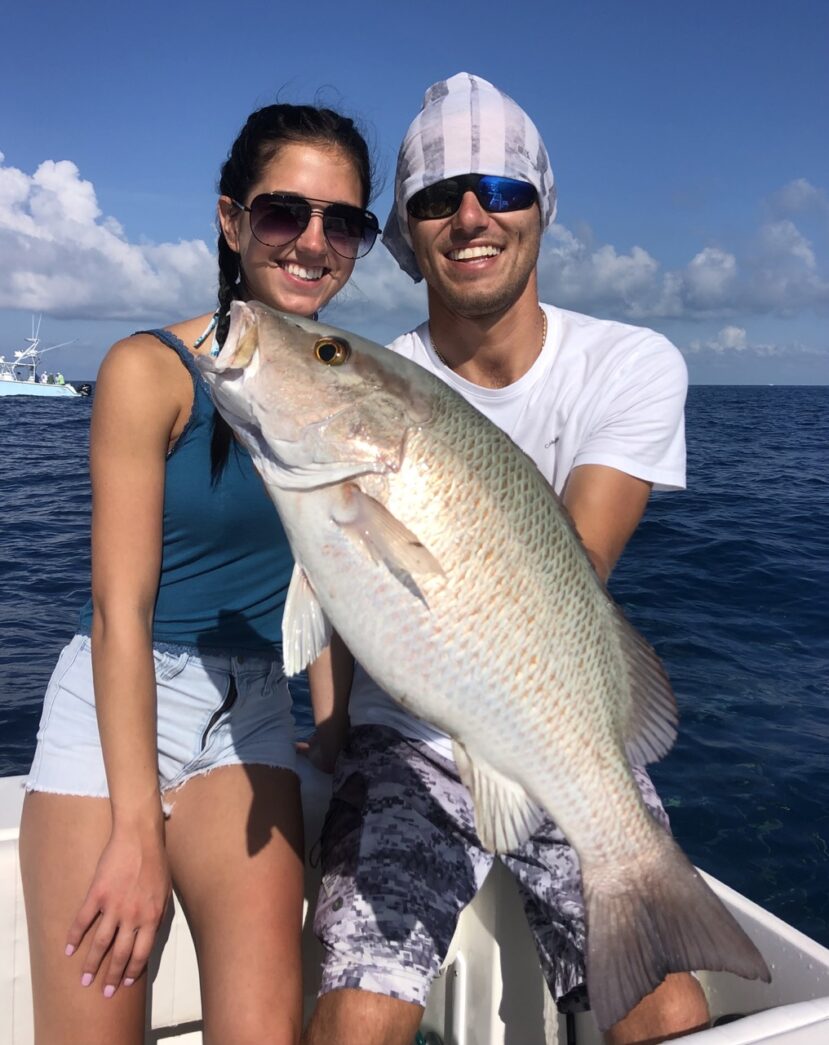
Regulations on this snapper vary from state to federal waters, so be mindful of where you are fishing. In state waters, you’re allowed to possess five mangrove snapper with a minimum size limit of 10 inches total length (from the fish’s snout to the tip of the tail). In federal waters, you’re allowed to possess 10 mangrove snapper with a minimum total length of 12 inches. Before leaving the dock, always check for any new updated regulations or closures on the FWC website. I personally don’t keep mangrove snapper under 14 inches, since the girth from a 10-inch to a 14-inch fish is doubled, giving you a more substantial filet for dinner and the smaller fish time to grow.
I wish you the best of luck this summer targeting mangrove snapper, as it is a great way to put some meat in the box while having fun. Bring the kids and grandkids, as the conditions are typically calmer this time of year and you can help the younger generation get hooked on fishing. Tight lines!











